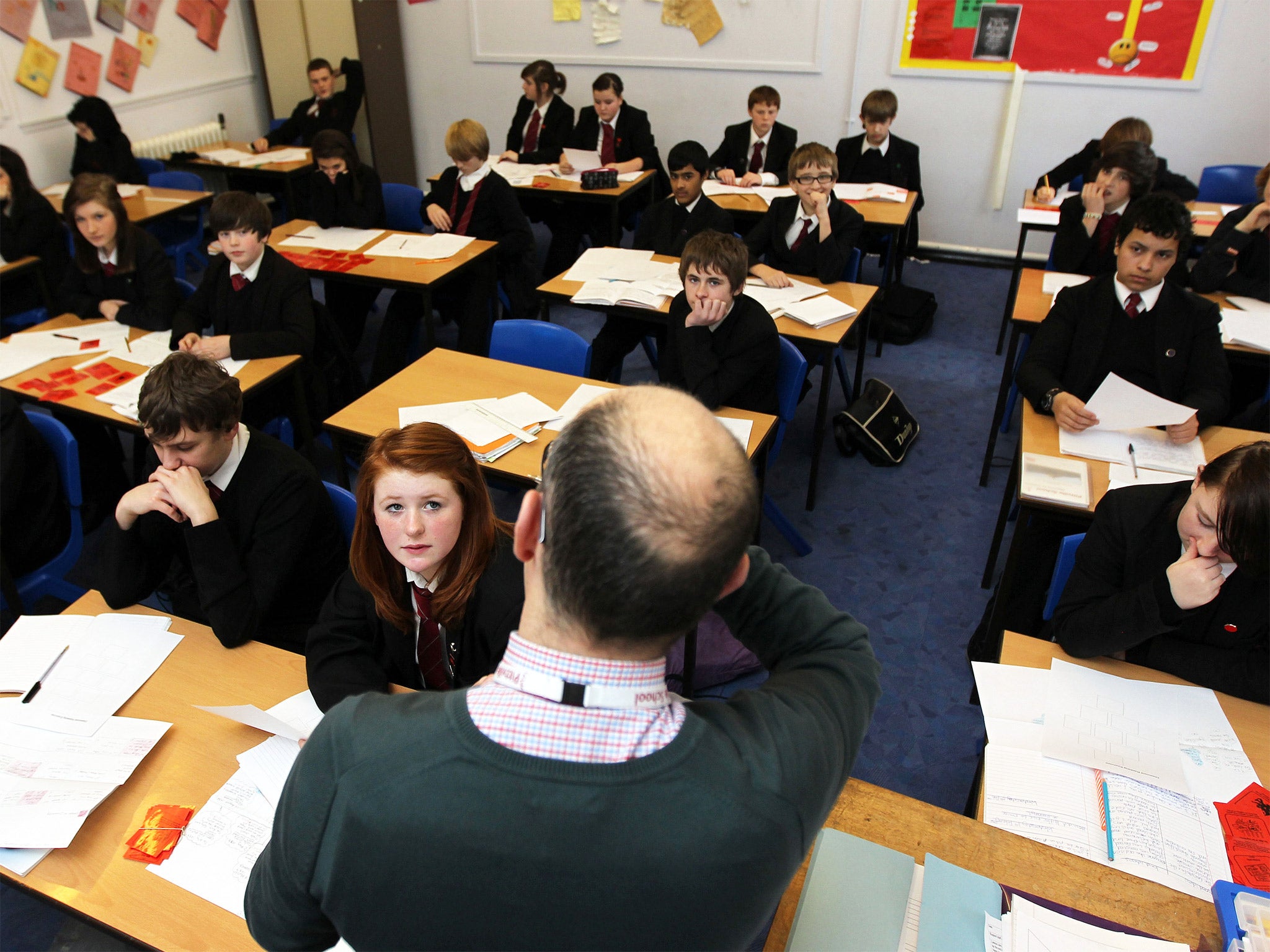Schools spent £800m on supply teachers in 2015 amid recruitment crisis
Teaching unions said the spending was indicative of a 'serious teacher recruitment and retention crisis'

Your support helps us to tell the story
From reproductive rights to climate change to Big Tech, The Independent is on the ground when the story is developing. Whether it's investigating the financials of Elon Musk's pro-Trump PAC or producing our latest documentary, 'The A Word', which shines a light on the American women fighting for reproductive rights, we know how important it is to parse out the facts from the messaging.
At such a critical moment in US history, we need reporters on the ground. Your donation allows us to keep sending journalists to speak to both sides of the story.
The Independent is trusted by Americans across the entire political spectrum. And unlike many other quality news outlets, we choose not to lock Americans out of our reporting and analysis with paywalls. We believe quality journalism should be available to everyone, paid for by those who can afford it.
Your support makes all the difference.Schools in England spent more than £800m on supply staff last year as a result of an on-going recruitment crisis, it has emerged.
Primary and secondary schools spent the equivalent of £168 on each child by hiring extra teachers in order to cover staff vacancies and absences.
An analysis by the BBC shows that the total spend of £821m was in fact £18m less than the previous year, however.
Schools in the south-west of England spent the least, with approximately £136 per child, with East of England schools close behind at a spend of just under £138 per child.
London was significantly costlier at an average of £260 per pupil. Around £212m was spent overall on extra staff in schools in the capital.
One school in Dagenham, east London spent near £1m on supply staff for the year, it was revealed. The Robert Clack School in Dagenham, east London spent the equivalent of £526 per child (a total of £953,807) according to Government figures.
Dr Neil Geach, the school's chair of governors, said the figures included expenditure on counselling staff, extra-curricular sport staff and professional development spending.
“The figures as reported do not reflect reality,” he said. “We do not use unqualified staff or cover supervisors to cover teaching groups - our children's education is too important.”
Official figures showed that teacher vacancy rate across England stood at 0.3 per cent, which meant around 1,000 posts were vacant in 2014.
A DfE spokesman said the number and quality of teachers was at a record high.
“Supply teachers provide a valuable role for schools, and schools themselves are best placed to make staffing decisions to reflect their individual needs,” he said.
”It is up to head teachers and governors to decide who is required for the job and this includes how best to cover absences.”
General secretary of teachers' union NASUWT Chris Keates said the spending showed a “a serious teacher recruitment and retention crisis”.
Teaching unions have expressed concerns about the use of private supply teacher agencies, claiming that some firms are putting the pursuit of profit ahead of providing high quality teachers.
At the same time, education leaders have warned of the potential dangers of relying on unqualified teachers to fill roles in schools.
According to the BBC’s analysis, schools spent twice as much on buying in extra staff through private agencies than sourcing additional staff through local councils.
A spokesman for the Department for Education said: “Supply teachers provide a valuable role for schools, and schools themselves are best placed to make staffing decisions to reflect their individual needs. It is up to head teachers and governors to decide who is required for the job and this includes how best to cover absences.”
“The number and quality of teachers is at a record high, with over 1,000 more graduates training to teach secondary subjects now than a year ago. The overall teacher vacancy rate is 0.3% and has remained around or below 1% for the past 15 years.”
Join our commenting forum
Join thought-provoking conversations, follow other Independent readers and see their replies
Comments